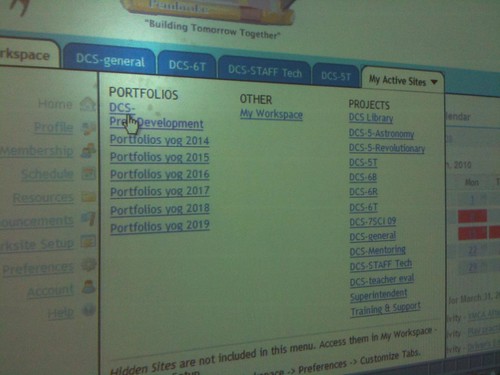Focus Questions: How are information management technologies such as
bookmarking, social bookmarking, and information alerts useful to
teachers?

Bookmarking, social bookmarking, and
information alert technologies enable teachers and their students to
manage information electronically. Bookmarking refers to saving websites
addresses on your computer to access them easily, rather than looking
them up repeatedly.
Social bookmarking occurs when groups of interested people share their web links electronically using a public web space.
Information alerts are electronic notices that teachers receive on their personal computers advising them that material on requested topics has become available in an online format.

I find bookmarking to be one of the most beneficial assets when using a computer, whether it be a teacher, student, or anyone for that matter. Bookmarking allows for someone to quickly access their most commonly used webpages with just a click of a button. For example, when I open my web browser the first page lists nine of my top websites I visit on a daily basis (the picture on the right is a snapshot of my web page). I am positive that teachers have bookmarked their favorite websites that they would like to share with their students.
Social bookmarking is basically the same concept, but it differs in some ways. Social bookmarking involves a group of people interested in the same topic coming together and sharing comments, ideas, web pages, media, and many other things. I took it upon myself to research which of the social medias were the most popular for social bookmarking and this is what I found:
Top 15 Most Popular Social Bookmarking Websites

I use Twitter myself to stay up-to-date on anything that interests me. All I have to do when I find something that I am interested in is click "Follow" and then anything that is posted on their behalf will show up on my news feed. The possibilities are endless, you can follow celebrities, politicians, a certain news crew (Fox, CNN, etc.), universities, research, and many more. I was really surprised to find that Delicious was number six on the list, being that I had never heard of it. This just shows that no matter how technologically savvy you may think you are, there are many more things to learn out there.
Tech Tool Link: Delicious
I was recently introduced to a social bookmarking website called Delicious. I had never heard of this website until I enrolled in an Intro to Technology for Educators class. This website allows the user to bookmark any website that they find interesting and it also allows them to place tags on the webpage that was bookmarked in order for the user to remember what they liked about it. For example, if I come across a website that discovered a new species of marine life in the depths of the ocean, I would bookmark that website and tag it "Amazing new marine life". This tools is great for organization if the user has a numerous amount of bookmarks. It helps keep everything in order and also great for a quick find.
Summary & Conclusion:
In general, bookmarking is a great tool for anyone. It allows us to have a customized and efficient way of accessing the things we love the most. Everyone likes to be made aware of new and upcoming information on the topics they are most passionate about. Moreover, not everyone is the same so bookmarking whether it be on the computer or on social networking websites will differ from person to person. It is so amazing the things that can be discovered in this world, but it's even more amazing that we can have access to that information with just a few clicks.
Resources:
Maloy, R. W., Verock-O, R. E., Edwards, S. A., & Woolf, B. P. (2010). Transforming learning with new technologies. Allyn & Bacon.






